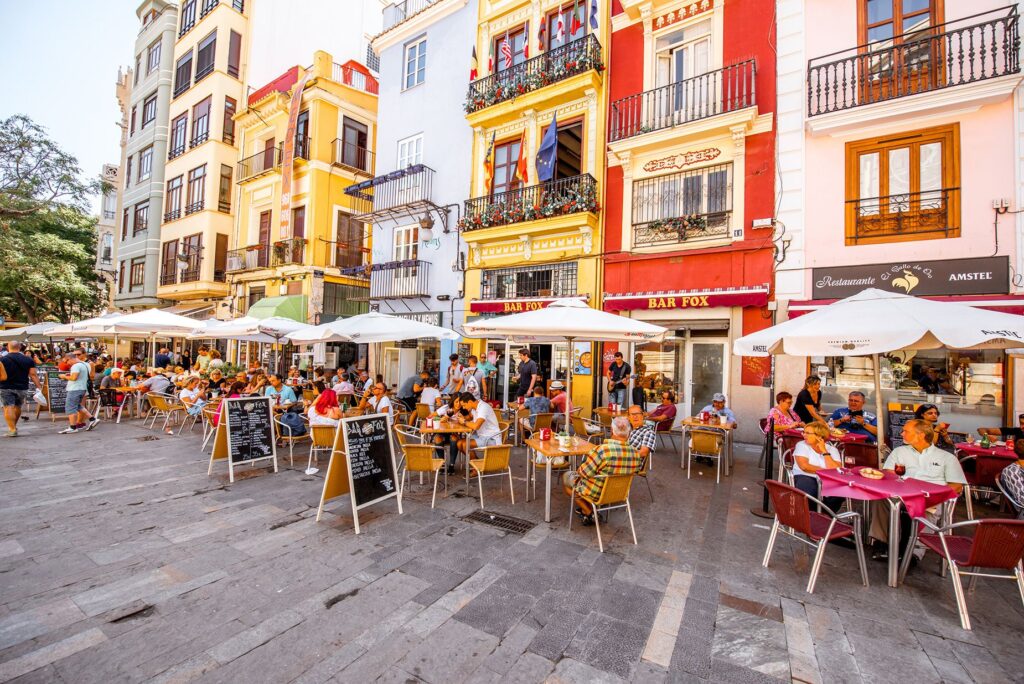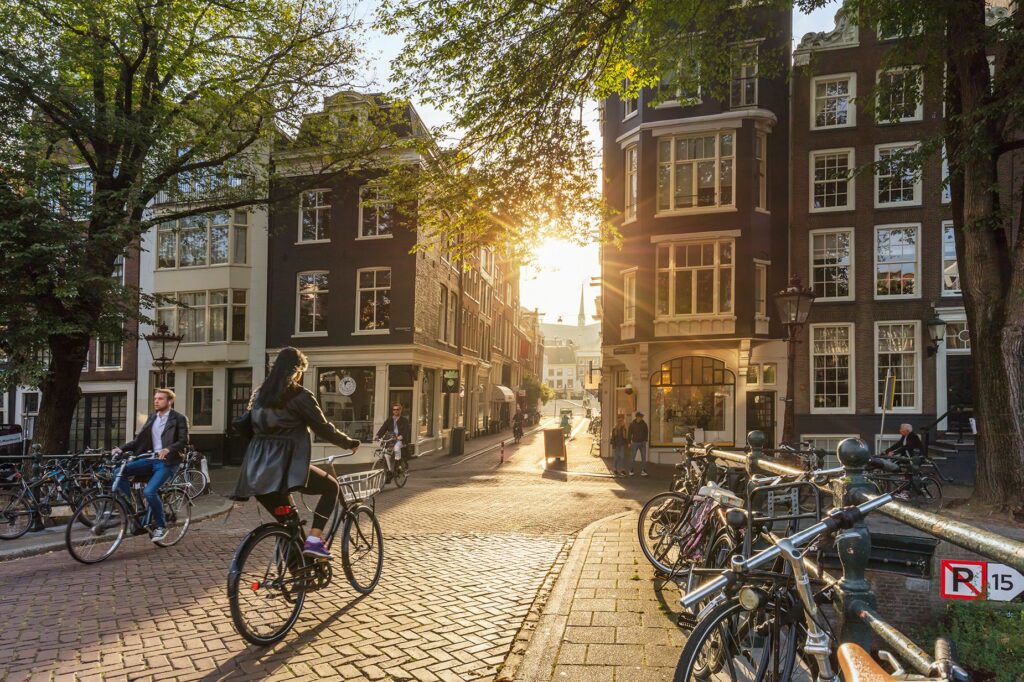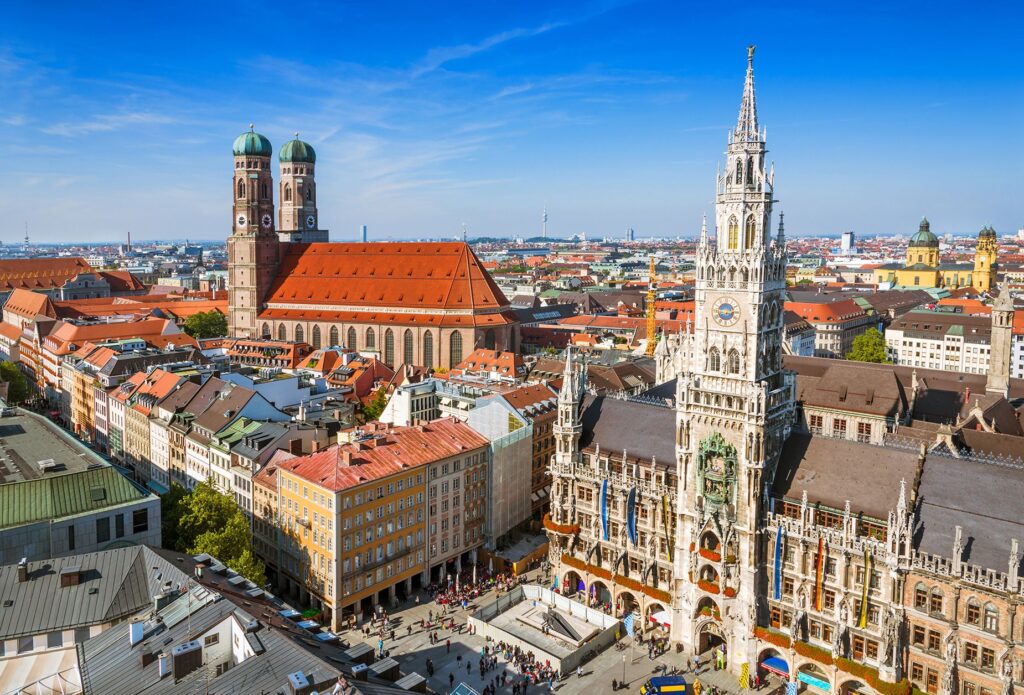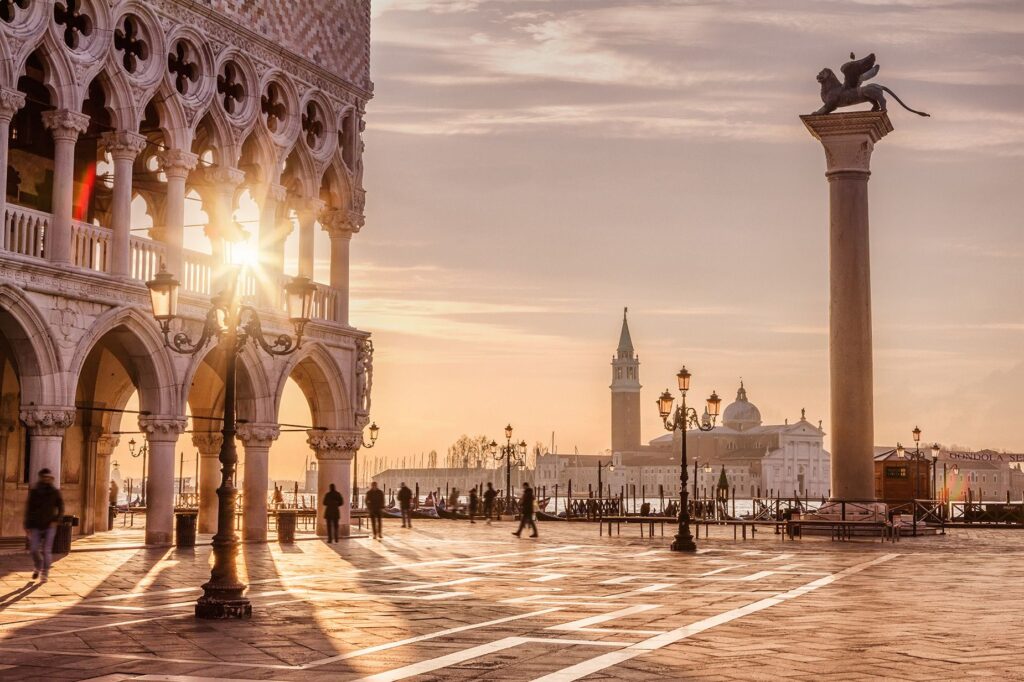
A new year is a fitting time to commit to big-picture goals — and for some, that can mean a dream of living abroad.
And thanks to the rise of remote work, new visa programs and tax incentives that entice digital nomads, investors and families, people considering an international move have more paths to explore.
Of course, the ability to move abroad is a privilege that extends only to people lucky enough to be in possession of the right passport, with doors remaining closed to many nationalities.
For those who have the option, the decision about which country to make your new home is a big one that requires extensive research and planning. Beyond the “I could live here!” daydreaming that might bubble up during vacation, moving abroad means a deep dive into tax implications, work visas, health care and quality-of-life comparisons, just to name a few.
One especially helpful resource is the annual Expat Insider survey by InterNations, an expat community with more than 5.1 million members. The survey, which has been running for a decade, reflects input from nearly 12,000 expats representing 177 nationalities in 181 countries or territories. It conveys their satisfaction level with various aspects of expat life on the basis of factors such as quality of life, ease of settling in, working abroad, personal finance, housing and language.
In addition, retirees can take advantage of resources including Live and Invest Overseas, whose annual index ranks its top 10 overseas retirement destinations. The 2024 index was released in early January, with Valencia, Spain, topping the list, followed by Braga, Portugal, and Mazatlán, Mexico.
It’s also important to consider the impact of your move on a new host country, especially in destinations that are seeing big upticks in immigration from the United States and other wealthy nations, says Megan Frye, a relocation consultant and writer who has lived in Mexico City for the past eight years.
Frye advises clients considering a move from the United States to Mexico — which has ranked among the top five countries in InterNations’ annual survey since 2014 — to be aware of the inequities in migration policies between the two countries.
“My focus with my clients is to be very clear about the gentrification problem that Mexico faces, and to give them an opportunity to think about what our role is in that situation,” says Frye, who is originally from Michigan. “I believe all people should be able to move freely wherever they want, but there’s a clear injustice considering how easy it is for US citizens to relocate to Mexico in comparison with the other way around.”
While there are dozens of destinations to consider for a move abroad to a new country, the following list prioritizes a range of expat-centric topics, including quality of life, affordability, safety and access to culture and outdoor activities. We’ve also included some of the downsides to consider, as well as info on how to make the move.
This list has general advice for people making the move from anywhere in the world, but focuses chiefly on US citizens.
Mexico

A longtime retirement destination for Americans, Mexico also has attracted more families and the digital nomad set over the past few years.
Mexico City — the largest in North America, with about 22 million people in the metro area — has been especially popular, and the capital’s population grew between 2019 and 2023 by 3%, about 600,000 people, according to The World Population Review. And from 2019 to 2022, the number of Americans who applied for or renewed residency visas spiked from about 17,800 to more than 30,000.
Elsewhere, cities including Oaxaca, San Miguel de Allende and Playa del Carmen are also havens for US expats, many of whom point to Mexico’s lower cost of living and relaxed lifestyle as strong draws.
Pros: Mexico ranked first in InterNations’ 2023 Expat Insider survey and has ranked among the top five countries since 2014. According to the latest results, expats appreciate factors such as the ease of settling in, a fulfilling social life and strong support networks. Mexico’s affordability and laid-back lifestyle also score high.
Cons: As with other global destinations that have received an influx of Americans as of late, some Mexican cities with large expat communities are experiencing pushback against foreigners.
Mexico also has a high crime rate. Homicide rates are nearly four times as those in the US, according to Mexico’s National Institute of Statistics and Geography. And those numbers may be even higher, since data from the Human Rights Watch suggests that an estimated 90% of crimes in Mexico are never reported.
How to make the move: Moving to Mexico isn’t as simple as packing a bag, hopping a flight and toasting to your new life over a margarita on the beach. Traditionally, valid passport holders from countries that don’t require a visa (including the United States) who are coming to Mexico for leisure or business have been allowed to remain in the country for up to 180 days. (They still must complete a visitor’s permit, or Forma Migratoria Multiple or FMM, at their port of entry.)
However, that amount of time is no longer the default, and the exact number of days allowed is at the discretion of the immigration official processing entry.
Mexico does not offer a digital nomad visa, but those considering a permanent move can look into a Temporary Resident Visa, which allows up to four years in Mexico. Meanwhile, official retirees can apply for a Permanent Resident Visa.
Portugal

Portugal’s popularity among expats has exploded since the country introduced its Golden Visa program in 2012. It has become the most successful of its kind, inspiring other countries to launch their own plans to attract foreign investment.
However, in the spring of 2023, Portugal made significant changes to the program, effectively ending the real estate investment aspect. It also changed its nonhabitual resident regime, says Alex Ingrim, a licensed financial advisor and president of global wealth management firm Chase Buchanan USA.
“Portugal’s a little bit harder of a place to immigrate to [now] if you want the flexibility of a Golden Visa,” Ingrim tells CNN Travel. “It’s not as attractive from a tax jurisdiction standpoint. And we’ve seen a lot of people kind of lose interest in Portugal frankly, and start planning for other jurisdictions in Europe.”
Pros: Portugal is tough to beat for its affordability, quality of life, year-round mild weather and high-quality health-care system. The cost of living is generally more affordable than most countries in Europe, and, according to Numbeo, the world’s largest crowd-sourced quality of life database, it’s 35.5% lower than in the United States. In addition, Portugal is the seventh-safest country in the world.
Cons: As is the case in Mexico and other countries with large expat communities, there’s growing backlash against the influx of foreigners, especially Americans, and especially in Lisbon. Critics say the resulting spike in rents and real estate prices has forced out longtime residents and changed the fabric of certain neighborhoods.
How to make the move: The Golden Visa program is still in place, although the country has now eliminated the real estate investment option. As Ingrim notes, Americans still interested in pursuing residency via that route “need to be really cognizant of how it affects their financial planning, how it affects their US tax obligations and whether it’s still kind of the best option for them moving forward.”
Spain

A gorgeous climate, one of the lowest costs of living in Western Europe, and vibrant, culture-rich cities and towns from the Mediterranean to the Atlantic: No wonder more Americans are eagerly proclaiming “Viva España!” for their next life chapter.
Madrid, Barcelona, Seville and Bilbao all boast large English-speaking expat communities, while the coastal city of Valencia is quickly gaining traction as a coveted spot, too: It ranked first in InterNations’ 2022 Quality of Life Index, and also topped the annual index by Live and Invest Overseas for 2024.
Pros: There’s mucho to love about Spain: modern cities and quaint small towns, high-quality universal health care and a world-renowned dining and nightlife scene, just to name a few.
According to the International LGBTQ+ Travel Association, Spain also is one of the most culturally liberal and welcoming countries for LGBTQ+ travelers. In 2005, it became one of the first countries to legalize same-sex marriage, and it hosts one of the world’s largest Pride celebrations, which draws some 1.5 million people every year.
Cons: English is generally not widely spoken outside of larger cities (and in the northeastern region of Catalonia, Catalan is the official – and often preferred by locals – language). The distinctly Spanish way of life also can take some getting used to for foreigners, as schedules for working, dining and socializing are later than American standards. The workday generally runs from 9 a.m. to 7 p.m., with a long lunch break during the afternoon siesta (during which time many businesses are closed), and Spaniards usually eat dinner no earlier than around 8:30 p.m.
Politics in Spain is also becoming increasingly more divisive (and occasionally violent), especially as the northeastern region of Catalonia continues its push for independence.
How to make the move: Several options exist for expats looking to relocate to Spain. Anyone with sufficient funds to support themselves and any dependents can consider the non-lucrative visa (or NLV), which is ideal for retirees and those who have other forms of passive income that originates in the United States. (However, you can’t earn income while in Spain with this visa.)
Spain also offers a digital nomad visa and an entrepreneur visa.
The Netherlands

This bicycling-obsessed nation ranked fifth in Gallup’s 2023 World Happiness Report, which assesses various indicators across life satisfaction and social and economic well being. It also topped Numbeo’s 2023 survey for quality of life.
More than 31,000 US citizens currently call the Netherlands home sweet home. The capital of Amsterdam is an especially popular spot, with its picturesque canals, historic architecture and relaxed vibe drawing a large international crowd.
Pros: For active types, it’s hard to beat the Netherlands’ world-class cycling infrastructure and culture – in fact, the country is said to have more bikes (fietsen) than people. The Netherlands also is known for its strong education system, with most education at all levels funded at least in part by the government.
One major tax advantage for expats: Highly skilled workers can apply for what’s known as the 30% ruling, a tax advantage in which they’re granted a tax-free 30% allowance of their gross salary for five years. However, the Dutch government recently implemented a cap on the amount of wages eligible for the ruling.
Cons: Compared with some other European countries, the Netherlands is pricey: Rents for unfurnished apartments hit an all-time high in November 2023, according to data from Statista. Outside main hubs, smaller cities and towns including Haarlem, Delft, Leiden and Maastricht are considerably less expensive.
In addition, income taxes are high, with a tax rate of 49.5% on salaries exceeding €73,031 (roughly US $81,135). That can come as quite a shock following five years of being taxed at 30% — which leads many expats to start considering their next move after their eligibility ends.
Finally, the weather — which is dark and rainy in the winter (conditions that make biking a lot less enjoyable) and constantly windy (there’s a reason for all those windmills) — can be difficult for some to adapt to.
How to make the move: The Netherlands does not offer a digital nomad visa, but you can apply for a long-stay visa, also known as an authorization for temporary stay (in Dutch, it’s MVV for short). In the United States, you can apply at the Netherlands embassy in Washington or at the consulates-general in Miami, New York or San Francisco.
Germany

Germany is the European Union’s biggest economy, and its strong job market and robust welfare system — not to mention heritage-rich cities and towns — are appealing for auslanders, especially Americans. According to the latest national figures, more than 121,000 Americans currently call Germany home. Berlin has an especially large international community of English-speaking internationals, but other hubs such as Munich, Frankfurt and Stuttgart also have strong expat communities.
Pros: Germany is a great fit for families, thanks to universal health care and social benefits such as a monthly kindergeld (“children money”) stipend, heavily subsidized childcare and generous parental leave.
In addition, compared with some other European countries, Germany’s freelancer visa is fairly easy to get, Arielle Tucker, a Switzerland-based certified financial planner, tells CNN Travel. She also notes that “one benefit that US citizens have over some non-EU countries is that they can apply for a Freelance Visa in Germany, as US citizens do not need an entry visa.”
Cons: Germany doesn’t have some of the same conveniences to which many Americans are accustomed, such as 24-hour grocery stores or drive-through pharmacies. On Sundays, most stores are closed (with the general exception of restaurants and bakeries). And the country’s bureaucracy can be maddening, with many government processes relying on official paperwork that’s delivered through the mail.
That popularity among auslanders has contributed to a housing pinch in major cities, especially Berlin, where finding accommodation is one of the most stressful aspects of a move. And beyond major cities, English is not widely spoken.
How to make the move: Germany’s skilled worker visa allows certain individuals with a qualifying degree or certificate a six-month window to search for employment in their area of qualification. Its self-employment visa is also fairly straightforward.
Singapore

Plenty of foreign nationals are singing Singapore’s praises: In 2022, this sophisticated city-state ranked third on InterNations’ Expat Essentials Index. It’s viewed as one of the top countries in which to live and work, thanks to a thriving job market, excellent education and health care, and one of the world’s best transportation systems.
Pros: Singapore is a top financial and investment hub in Asia, with excellent job prospects and economic stability. Foodies, meanwhile, will love its dazzling dining scene, from lively night markets to Michelin-starred restaurants. And travel enthusiasts can take advantage of easy access to one of the world’s most awarded aviation hubs, Changi Airport.
Cons: Singapore is very expensive, and some people may have trouble adjusting to its humid, tropical climate. It’s also a long way away from the United States — which can be tricky for visits home.
How to make the move: Singapore doesn’t offer a digital nomad visa, but those who have worked lined up can apply for an Employment Pass. Entrepreneurs interested in starting a business in Singapore can apply for an Entre Pass.
Costa Rica

Costa Rica’s abundant natural beauty, tropical climate and affordable cost of living have long appealed to expats looking for their own slice of pura vida, which literally translates to “pure life” and is both the national slogan and lifestyle. The Central American country has long been a popular destination for Americans.
Pros: Costa Rica has an excellent health-care system that consistently ranks high. It’s also one of the most sustainable countries in the world. Locals tend to lead healthy lifestyles, whether that’s surfing year-round or doing daily yoga postures on the beach.
In addition, Costa Rica offers some tax incentives that appeal to foreign nationals. “Costa Rica only taxes income earned in the country, which means that non-Costa Rican pensions, investments, or employment income do not incur an additional Costa Rican tax burden,” David Lesperance, founder and principal of Lesperance & Associates, a tax and immigration advisement firm.
Cons: Costa Rica’s laid-back lifestyle also can affect how business is done, and the tendency to show up late is often referred to as “Tico Time.”
In addition, some creature comforts may be lacking compared with what Americans are used to. In older buildings, for example, it’s not uncommon to throw toilet paper in bins instead of flushing it down the toilet. And thanks to its geography and location along the infamous Ring of Fire, Costa Rica experiences earthquakes, tsunamis and volcanic activity — it’s home to six active volcanoes.
One important note on the tax front: There is no tax treaty between Costa Rica and the United States, so claims on US tax returns for foreign tax credits or foreign earned income are more complicated for expats.
How to make the move: With the country’s new digital nomad visa, remote workers can stay in Costa Rica for up to a year with an option to extend for another year.
Panama

Often described as the Miami of Central America, Panama is a prominent financial and business hub linking North and South America. In recent years, it’s been drawing more Americans beyond just the retirement set.
Lesperance says he’s seen a notable bump in moves among high-net-worth clients with Hispanic heritage, as well as workers in the financial sector, who are moving there “en masse,” especially as Miami has become more crowded and expensive.
Pros: Year-round warm weather, a mix of cosmopolitan hubs such as Panama City and relaxed beach towns, and easy access to both North and South America make Panama an excellent option for frequent travelers. And one of the biggest advantages for Panama’s Golden Visa scheme is that it provides perpetual residency without requiring investors to reside there. Maintaining permanent resident status requires a visit to Panama at least every two years.
Cons: In 2023, the cost of establishing residence in Panama increased substantially, from $300,000 to $500,000.
In addition, because Panama also does not have a tax treaty with the United States, claims on US tax returns for foreign tax credits or foreign earned income are complicated, Lesperance notes.
How to do it: Panama offers several types of investment opportunities that offer permanent residency and a path to Panamanian citizenship after five years.
The Panama Qualified Investment Immigration (or PQII) program, often known as the Panama Golden Visa, is a residency-by-investment procedure. The minimum investment is $500,000 (which increased from $300,000 in October 2022), which must be held for at least five years. Investors can qualify via real estate purchases, bank deposits or investing in funds.
Panama also has a retirement visa program. However, Lesperance notes that although the retirement route technically comes with Panamanian citizenship after five years, “in practice it is not straightforward. Therefore advantages of the PQII pathway versus the cost of a retirement visa are questionable.”
Italy

It’s hard to imagine a country that boasts a more universally romantic notion of living abroad, and thanks in part to the popularity of investment schemes such as the one euro homes that many small towns have launched, expats now have more options of fulfilling their dreams of la dolce vita.
Pros: Access to some of the world’s most popular tourist cities, picturesque countrysides and immersion in a culture that values family, food and wine — what’s not to love about Italian life? Italy’s health-care system is also good, and many expats give a big thumbs-up to the overall friendliness of Italians.
Cons: Prospects for employment in Italy aren’t as abundant as they are in other European countries. Beyond major cities, English generally isn’t widely spoken, and you’ll likely need to hire an attorney to help navigate legal processes such as purchasing a home. And be prepared for Italy’s infamously glacial government bureaucracy.
How to make the move: Americans who are planning to stay more than three months must get an entrance visa at an Italian consulate before arriving. Italy’s visa options include a long or short-term self-employment visa, or lavorno autonomo, and a start-up visa.
France

While the reality of living in France is drastically different from what’s portrayed on screen à la “Emily in Paris,” there’s still plenty to say oui! to: universal health care, highly valued work-life balance (remember all those protests in response to the French government raising the retirement age?) and some of the world’s most coveted food and fashion scenes.
Although it can be pricey, France also offers extensive social programs and benefits for residents: universal health care, for one, as well as numerous public holidays. The country scores well on InterNations’ indexes for quality of life.
Pros: Residents can take advantage of numerous social benefits, including universal health care, economic stability and numerous public holidays — not to mention a 35-hour work week. In addition to the excellent quality of life, from a tax standpoint “because they have some good treaties with the US,” Tucker says. “For example, they are one of the few countries where Roth IRAs are considered qualified retirement accounts and their tax-free nature is preserved. So even though the tax rates are higher, if you can do some pre-immigration planning, it can still be an attractive country for US expats.”
Cons: As Tucker notes, income and social taxes in France are high: up to 45% (and high-income individuals also may need to pay a surcharge of 3% on part of their income).
Outside of major cities such as Paris, Lyon and Strasbourg, the language barrier can be problematic if you don’t have a solid grasp of French.
How to make the move: Anyone looking to stay in France for more than three months will need to apply for a long-term visa. France does not offer a visa for digital nomads; instead, you’ll need a long-stay visa if you plan to work or study. There are several categories under France’s Carte de Séjour Residence Permit, each with various conditions and restrictions.

